Abstract
In Experiment 1, 2 experimental subjects were given pretraining of nonarbitrary relations that brought their responses under the control of four contextual stimuli; same, opposite, more than, and less than. One control subject was not exposed to this pretraining. The 2 pretrained subjects and the 3rd nonpretrained subject then received training in six arbitrary relations, the following four relations being the most critical: same/A1-B1, same/A1-C1, less than/A1-B2, more than/A1-C2. All 3 subjects were then tested for seven derived relations, the following three relations being the most important: same/B1-C1, more than/B1-C2, less than/B1-B2. The 2 pretrained subjects, but not the nonpretrained subject, showed the derived relations. One of the stimuli (B1) from the relational network and two novel stimuli (X1 and X2) were then used to train three different self-discrimination responses on three complex schedules of reinforcement. That is, all 3 subjects were trained to pick X1 if they had not emitted a response, to pick B1 if they had emitted one response only, and to pick X2 if they had emitted two responses only. The 2 pretrained subjects, but not the nonpretrained subject, showed the predicted transformation of self-discrimination response functions in accordance with the relations of sameness, more than, and less than (i.e., no response, pick B2; one response only, pick C1; and two responses only, pick C2). In Experiment 2, 2 new subjects were employed, and the arbitrary relational training and testing phases were modified to control for a procedural artifact that may have contributed to the results of the first experiment. Experiment 2 replicated the findings of Experiment 1. The pattern of results support the utility of a relational frames approach to understanding derived stimulus relations.
Keywords: self-discrimination response function, arbitrarily applicable relations, same, more than, less than, transformation of functions, humans
Full text
PDF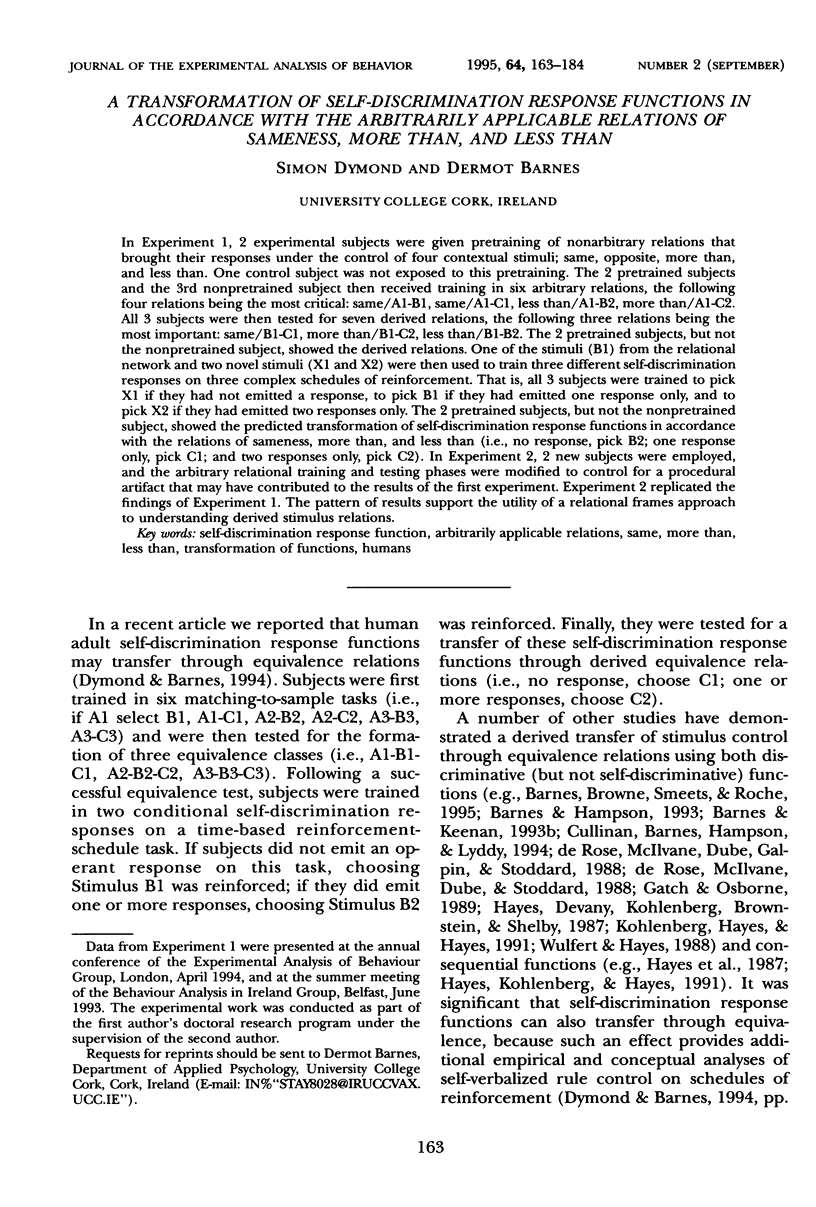





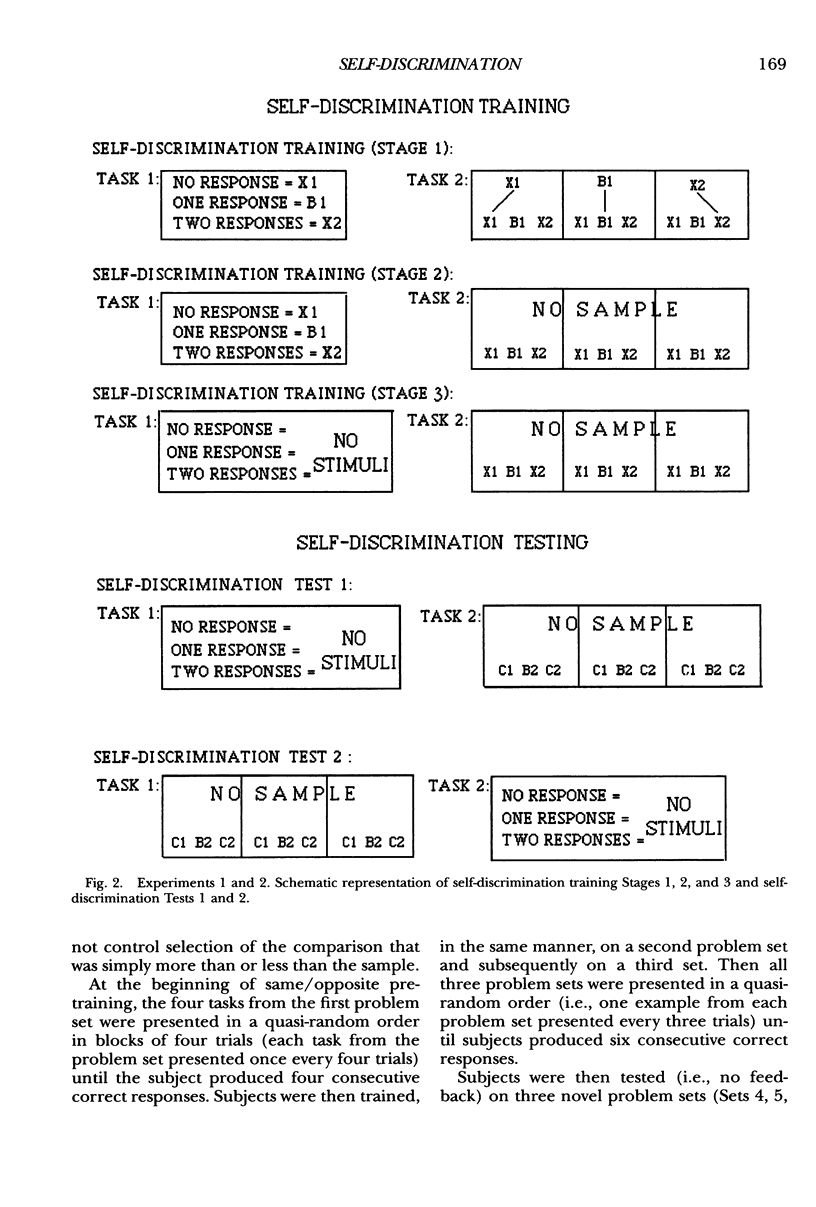
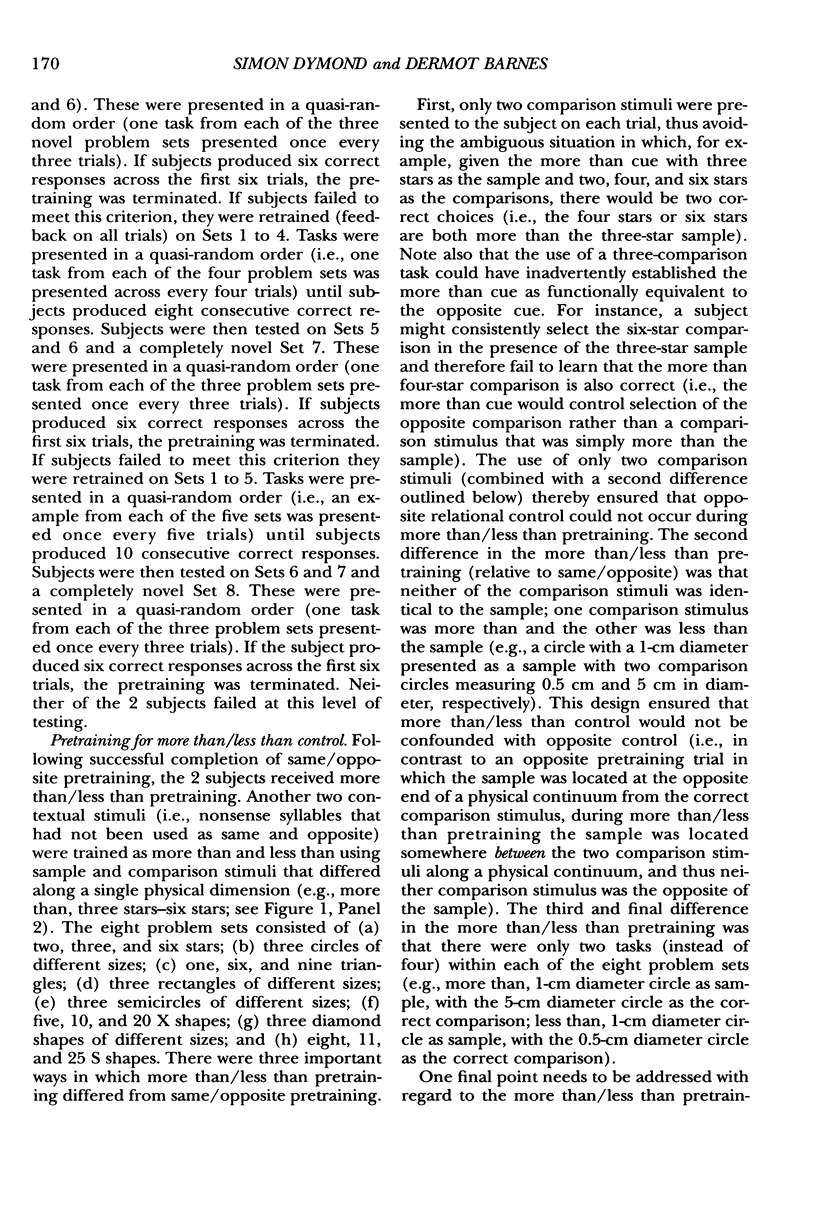


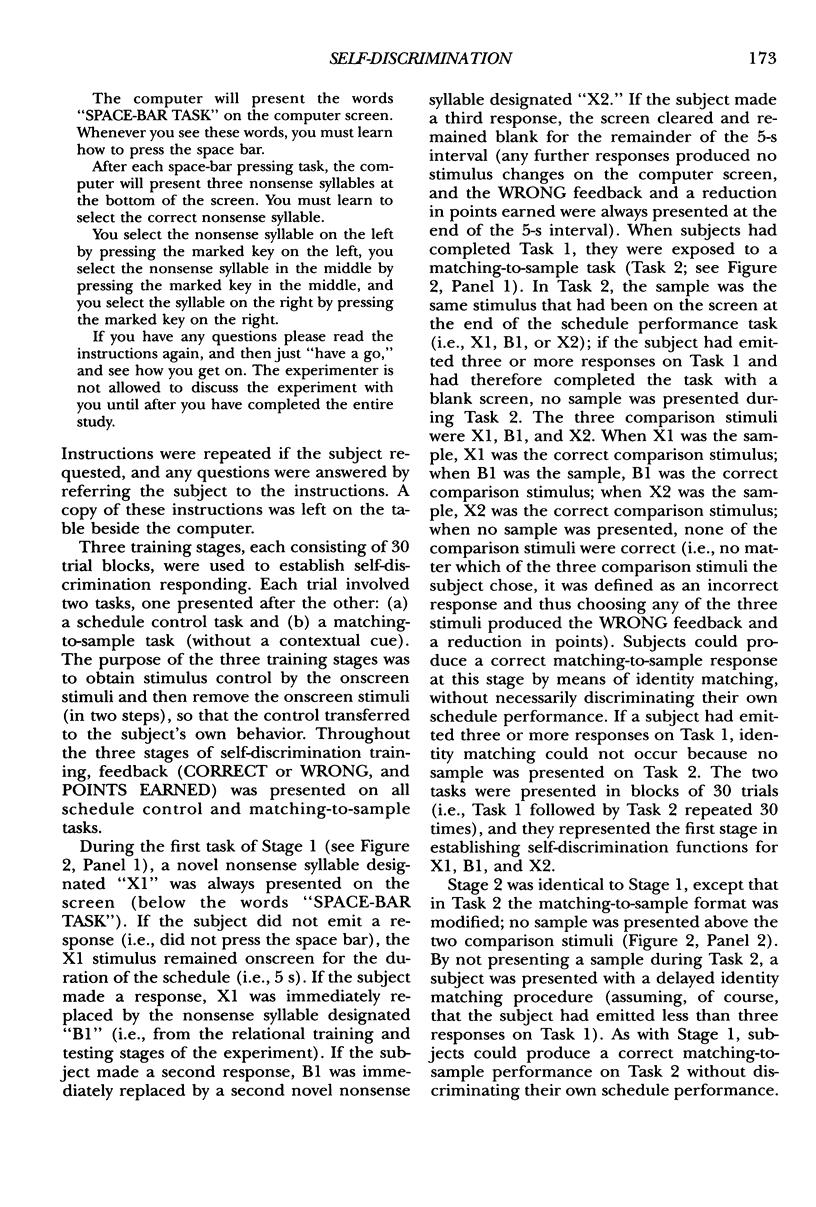

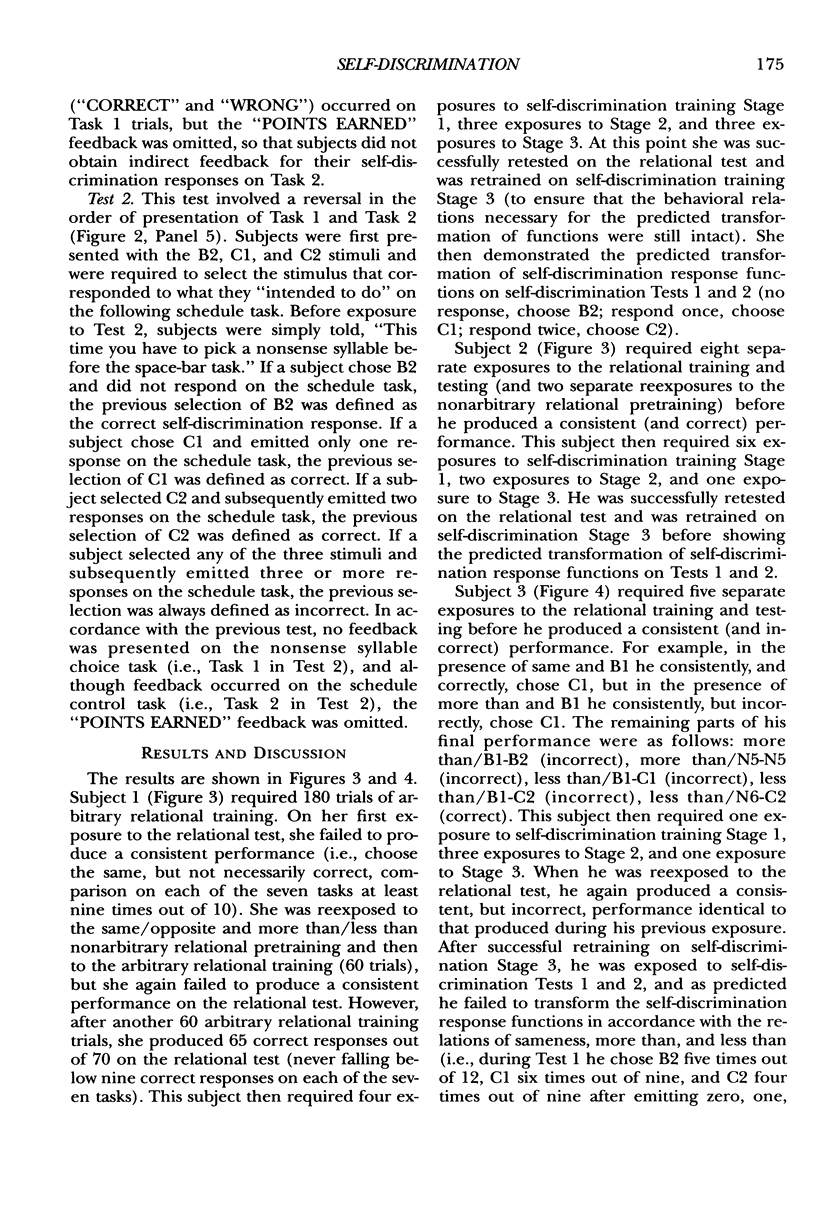

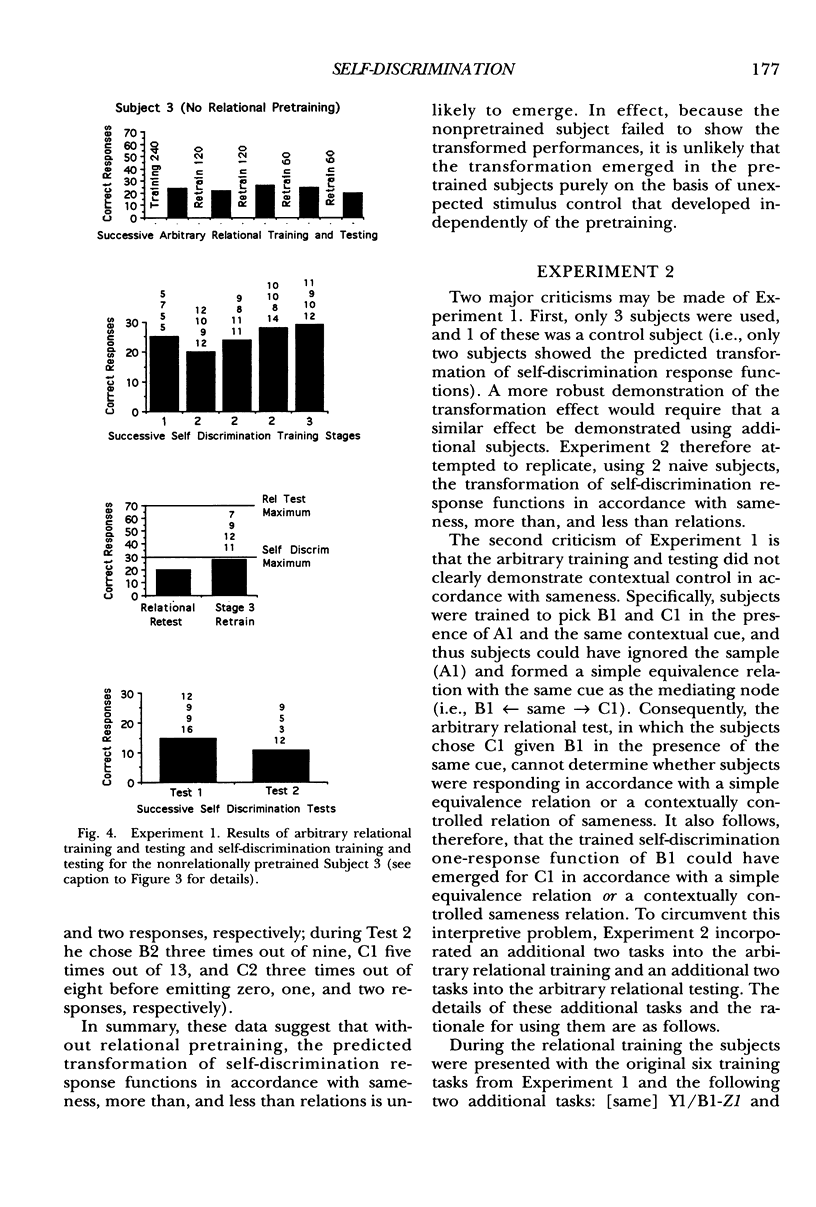
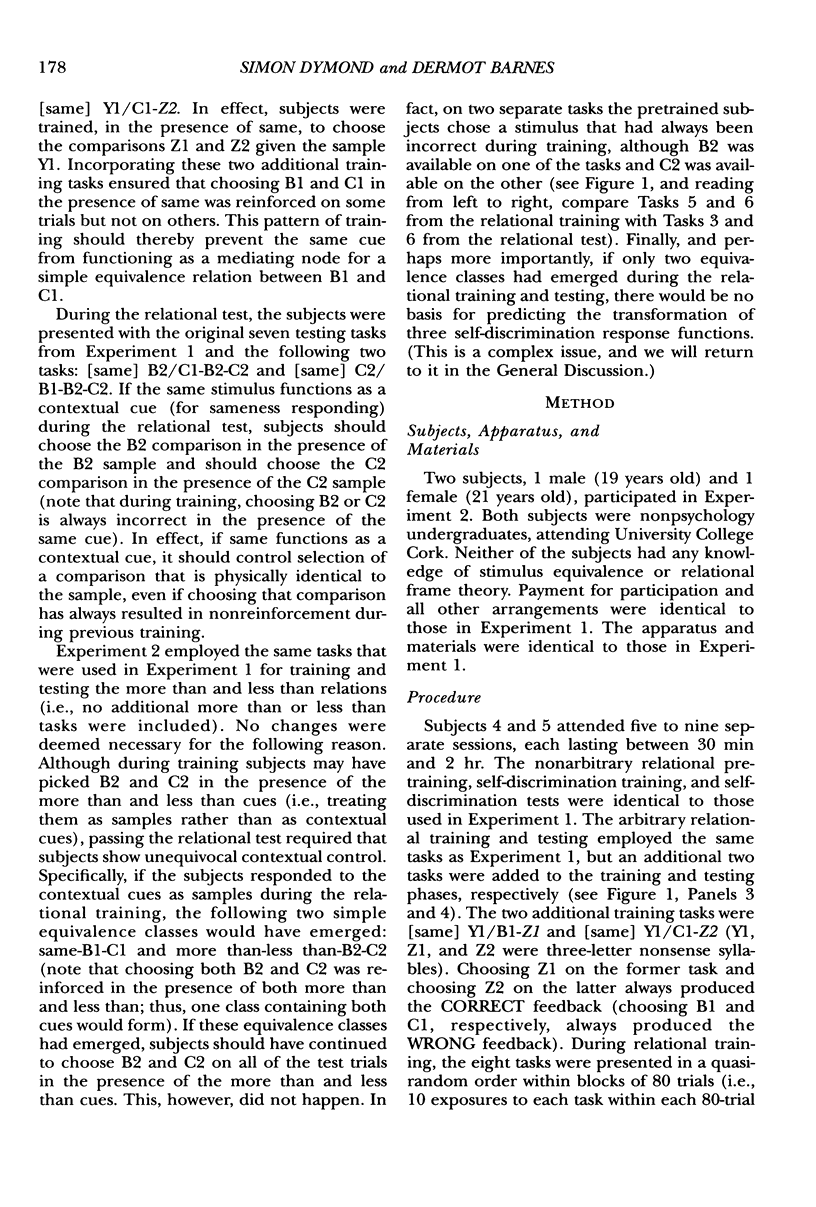
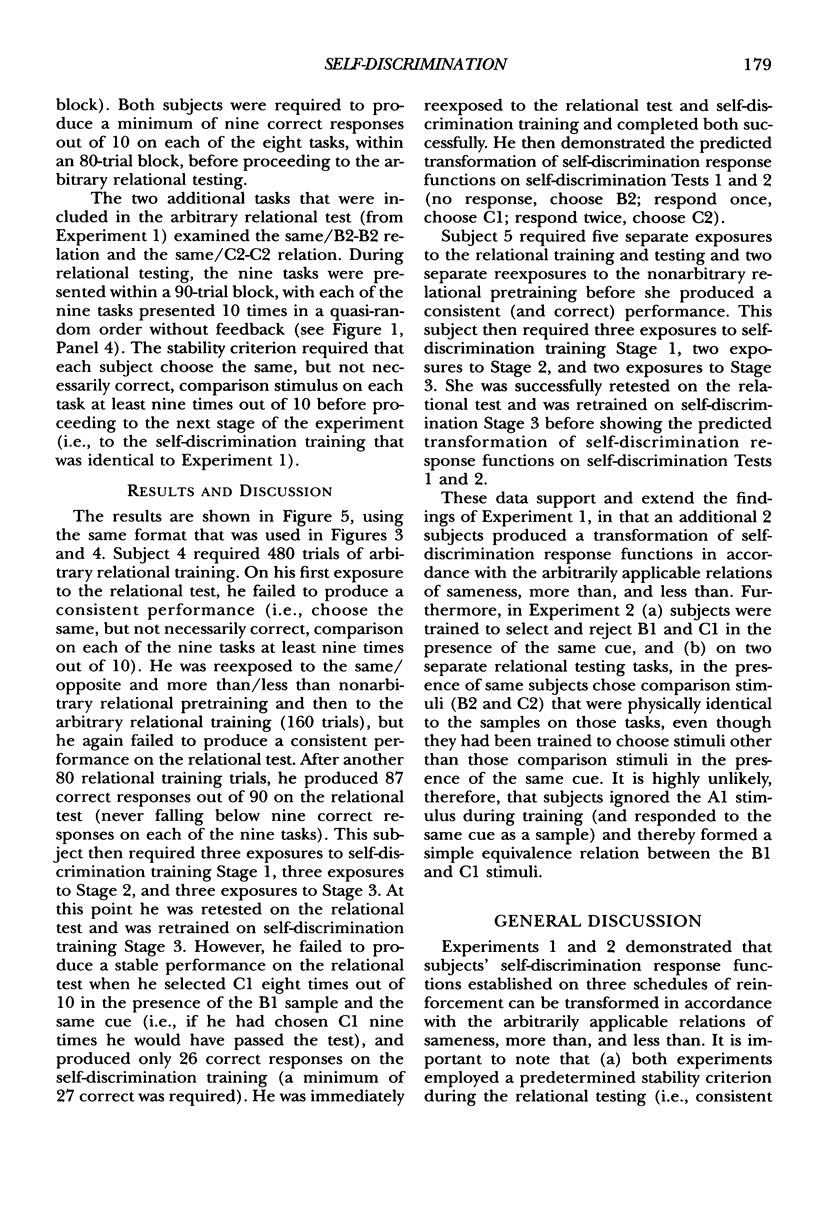

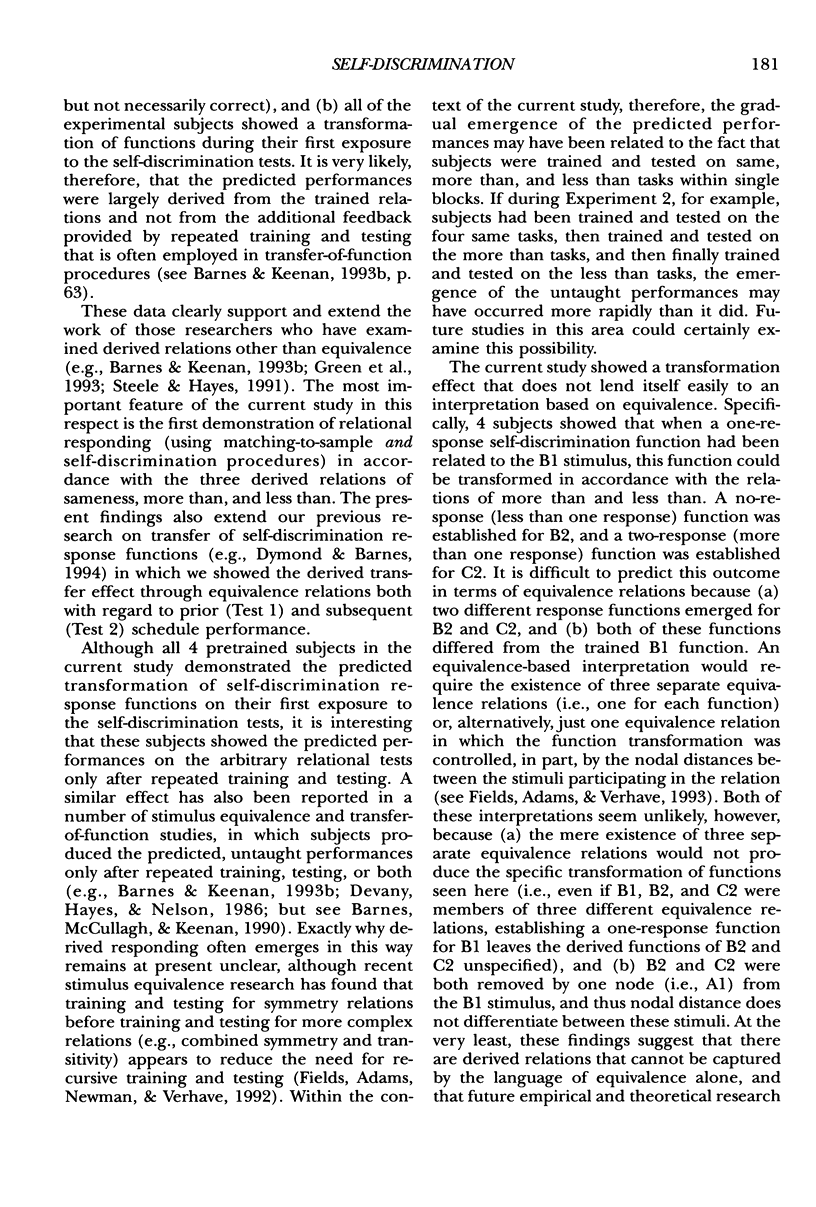
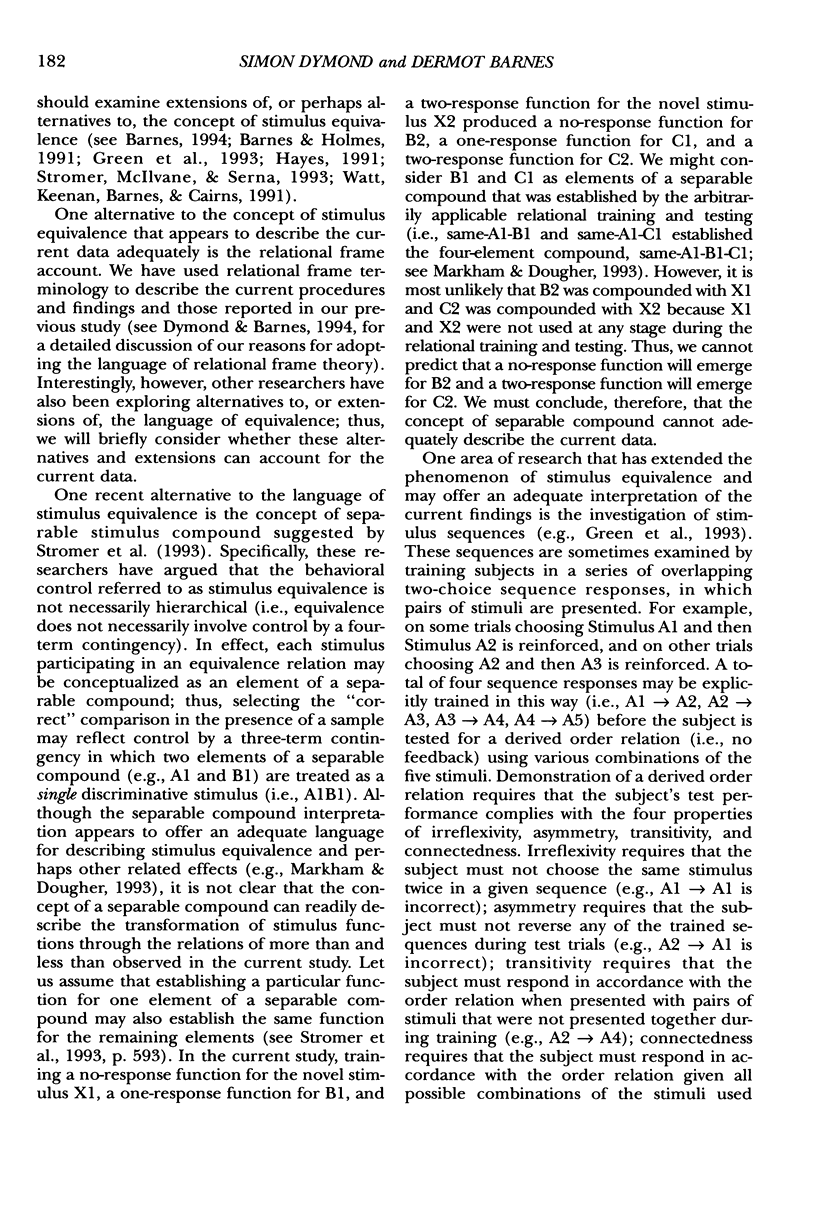

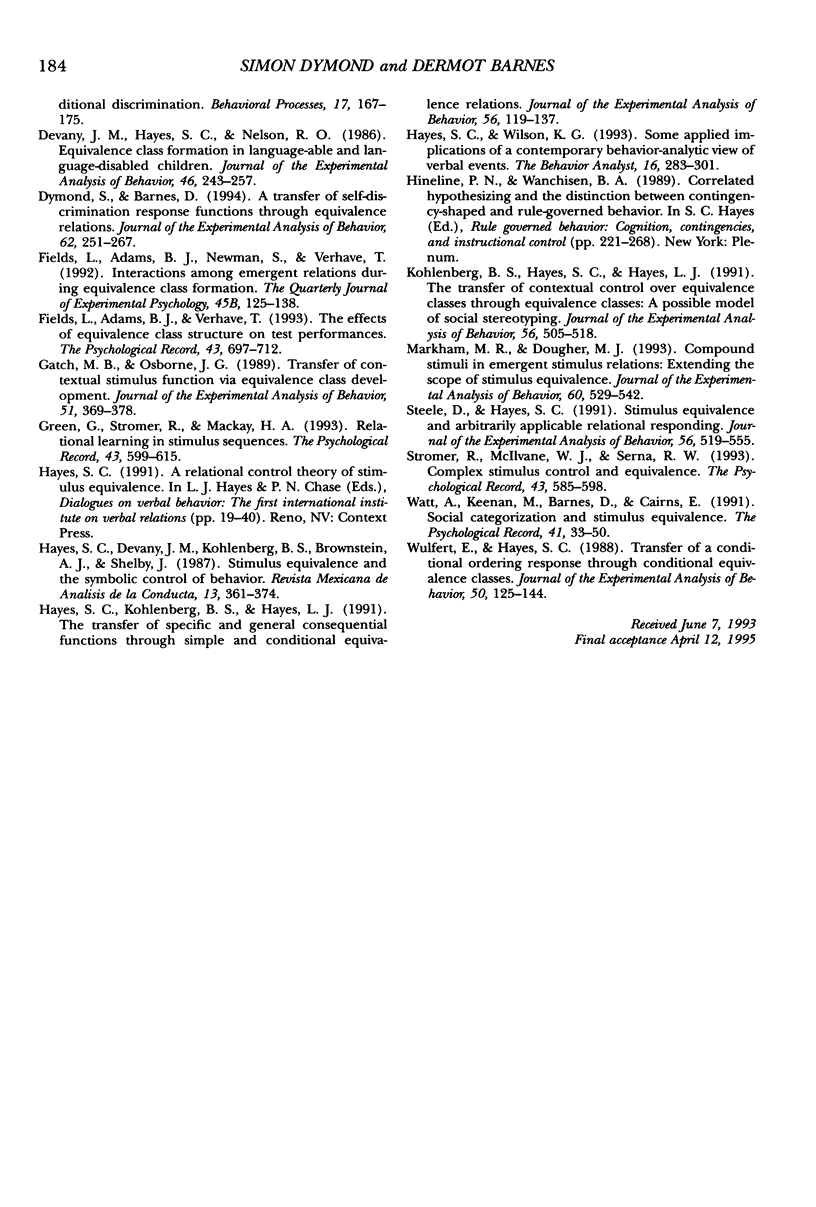
Selected References
These references are in PubMed. This may not be the complete list of references from this article.
- Barnes D., Keenan M. A transfer of functions through derived arbitrary and nonarbitrary stimulus relations. J Exp Anal Behav. 1993 Jan;59(1):61–81. doi: 10.1901/jeab.1993.59-61. [DOI] [PMC free article] [PubMed] [Google Scholar]
- Barnes D., Keenan M. Concurrent activities and instructed human fixed-interval performance. J Exp Anal Behav. 1993 May;59(3):501–520. doi: 10.1901/jeab.1993.59-501. [DOI] [PMC free article] [PubMed] [Google Scholar]
- Devany J. M., Hayes S. C., Nelson R. O. Equivalence class formation in language-able and language-disabled children. J Exp Anal Behav. 1986 Nov;46(3):243–257. doi: 10.1901/jeab.1986.46-243. [DOI] [PMC free article] [PubMed] [Google Scholar]
- Dymond S., Barnes D. A transfer of self-discrimination response functions through equivalence relations. J Exp Anal Behav. 1994 Sep;62(2):251–267. doi: 10.1901/jeab.1994.62-251. [DOI] [PMC free article] [PubMed] [Google Scholar]
- Fields L., Adams B. J., Newman S., Verhave T. Interactions among emergent relations during equivalence class formation. Q J Exp Psychol B. 1992 Aug;45(2):125–138. doi: 10.1080/14640749208401013. [DOI] [PubMed] [Google Scholar]
- Gatch M. B., Osborne J. G. Transfer of contextual stimulus function via equivalence class development. J Exp Anal Behav. 1989 May;51(3):369–378. doi: 10.1901/jeab.1989.51-369. [DOI] [PMC free article] [PubMed] [Google Scholar]
- Hayes S. C., Kohlenberg B. S., Hayes L. J. The transfer of specific and general consequential functions through simple and conditional equivalence relations. J Exp Anal Behav. 1991 Jul;56(1):119–137. doi: 10.1901/jeab.1991.56-119. [DOI] [PMC free article] [PubMed] [Google Scholar]
- Kohlenberg B. S., Hayes S. C., Hayes L. J. The transfer of contextual control over equivalence classes through equivalence classes: a possible model of social stereotyping. J Exp Anal Behav. 1991 Nov;56(3):505–518. doi: 10.1901/jeab.1991.56-505. [DOI] [PMC free article] [PubMed] [Google Scholar]
- Markham M. R., Dougher M. J. Compound stimuli in emergent stimulus relations: Extending the scope of stimulus equivalence. J Exp Anal Behav. 1993 Nov;60(3):529–542. doi: 10.1901/jeab.1993.60-529. [DOI] [PMC free article] [PubMed] [Google Scholar]
- Steele D., Hayes S. C. Stimulus equivalence and arbitrarily applicable relational responding. J Exp Anal Behav. 1991 Nov;56(3):519–555. doi: 10.1901/jeab.1991.56-519. [DOI] [PMC free article] [PubMed] [Google Scholar]
- Wulfert E., Hayes S. C. Transfer of a conditional ordering response through conditional equivalence classes. J Exp Anal Behav. 1988 Sep;50(2):125–144. doi: 10.1901/jeab.1988.50-125. [DOI] [PMC free article] [PubMed] [Google Scholar]
- de Rose J. C., McIlvane W. J., Dube W. V., Galpin V. C., Stoddard L. T. Emergent simple discrimination established by indirect relation to differential consequences. J Exp Anal Behav. 1988 Jul;50(1):1–20. doi: 10.1901/jeab.1988.50-1. [DOI] [PMC free article] [PubMed] [Google Scholar]


